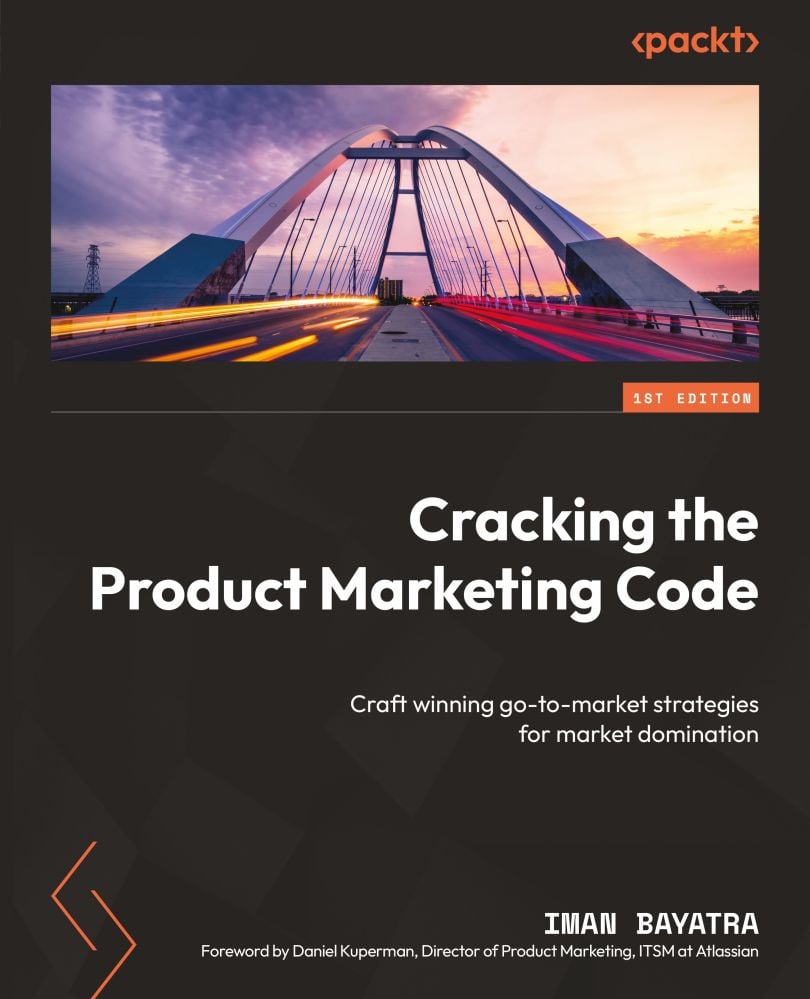Your role as an outbound product marketer extends beyond the buyer journey. You also have a crucial responsibility for the entire customer journey, which involves the overall experience that a customer has with a company, from initial awareness and consideration to post-purchase support and advocacy. By providing exceptional customer experiences throughout the entire journey, you can turn customers into brand advocates who promote your products or services and help drive future sales.
You also need to continually monitor and analyze customer data to optimize your efforts and ensure that the customer journey is always evolving and improving. Let’s explore the various stages of the marketing funnel and the decision-making process for buyers while examining the specific role of outbound product marketers in each phase.
The 3 main stages of the marketing funnel
- TOFU (top of the funnel)
- MOFU (middle of the funnel)
- BOFU (bottom of the funnel)
Top of the Funnel: Problem Recognition
The initial stage of a marketing strategy is critical for engaging the target audience and introducing them to the product and its solution. As an outbound product marketer, your focus should be on identifying the specific need that your product meets and effectively communicating this message to your target audience. Developing a unique value proposition and a compelling selling point is crucial to highlight the ways your product can serve your audience and stand out from competitors.
Amazon Prime’s shipping service is a shining example of a value proposition that satisfies customers’ need for speed and convenience. By providing a two-day shipping service, Amazon stands out from its competitors, addressing the needs of its customers in a way that resonates with them. As an outbound product marketer, your goal is to create a value proposition that is equally compelling, resonates with your target audience and sets your product apart in a crowded market.
Middle of the Funnel: Information Search
When potential customers recognize that they have a problem that requires a solution, they enter the information-seeking phase. To establish trust with these customers before they make a purchase, it is critical to work closely with your content team to provide them with real value through informative content, such as articles, guides and e-books.
Google is an outstanding example of a company that places a high emphasis on providing potential and existing customers with helpful content. Google provides blogs, guides and even an academy to enable customers to not only understand how Google’s solutions can address their specific needs but also to guide them on how to apply these solutions easily.
By doing so, Google proves that it is offering the best choice, as customers can use the solutions without the need for external support. During this stage, buyers want to ensure they are choosing the right solution. Providing testimonials at various touchpoints, such as the company’s website, social media accounts and emails, will aid buyers in validating their decisions. As an outbound product marketer, it is critical to collaborate with your content team to provide potential customers with informative content that can help establish trust and provide value during the information-seeking phase.
MOFU (Part 2): Evaluation of Alternatives
As buyers seek to determine whether a specific product is the right choice or not, they typically want to explore other alternatives. This is a crucial stage in the buying journey where searchable content can help establish your product or service as the preferred solution. As an outbound product marketer, you will need to collaborate with marketing teams, specifically the demand generation and SEO teams, to develop effective targeting strategies that include ads, creatives and keyword lists while also ensuring SEO-friendliness and being always on.
Simultaneously, you will need to work with third-party blogs and websites, such as G2.com, to provide reviews and endorsements of your products, as well as to compare them with those of your competitors. This approach provides buyers who want to make a decision with testimonials and valuable information to assist them in selecting the most appropriate solution.
By working closely with your marketing teams and third-party websites, you can effectively communicate the unique value proposition of your product and establish it as the preferred choice for potential customers during the evaluation stage of the buying journey.
Bottom of the Funnel: Purchase Decision
At this stage, potential buyers are required to make a decision, and this is where you must provide further validation to persuade them to proceed with the purchase. Buyers are likely to withdraw from making a purchase if they are not entirely convinced that your product/solution is the right one for them. As an outbound product marketer, your role is to provide additional content that offers additional testimonials and case studies that demonstrate how your solution has helped other clients, along with positive reviews. This approach provides further validation and supports potential buyers in making an informed decision.
However, at this stage, any negative reviews can have a significant impact on the buyer’s decision and cause negative consequences. As a result, apply a flywheel model, which is a customer-centric marketing approach that emphasizes creating a positive feedback loop that generates momentum and drives growth.
The 3 key stages of the flywheel model
- Attract: Here, you need to attract potential customers to your product by creating compelling content and promotional campaigns that resonate with your target audience.
- Engage: Once you have attracted potential customers, the next step is to engage with them by providing valuable content, personalized messaging and exceptional customer service.
- Delight: The final stage is to delight your customers by providing them with an exceptional experience that exceeds their expectations. Delighted customers are more likely to become loyal customers and advocates who promote your product to others.
BOFU (Part 2): post-purchase behavior
In the post-purchase stage, prioritize successful retention marketing strategies and deliver a meaningful customer experience. This stage is critical as it helps with retaining customers and driving growth to your business. As an outbound product marketer, your focus should be to collaborate with CX teams to create personalized experiences and work with the customer loyalty team to build loyalty programs that encourage advocacy and retention.
Creating a referral program for recent buyers is an effective way to build customer loyalty. By growing a group of word-of-mouth marketers through social media platforms or developing your own system,  you can incentivize referrals and encourage customers to become advocates for your products.
you can incentivize referrals and encourage customers to become advocates for your products.
Tesla has successfully integrated a referral program as a core component of their marketing strategy. The program enables customers to share a unique referral code with their acquaintances, and, in return, participants receive a lucrative reward of 1,000 miles of free supercharging with the purchase of a new Tesla car. Additionally, each successful referral gives them an opportunity to win a Model Y monthly or Roadster supercar quarterly, creating an element of excitement and exclusivity. To make the experience seamless and engaging, Tesla has developed a dedicated app that tracks the entire program and provides users with an effortless and rewarding experience.
By focusing on post-purchase retention marketing strategies and creating loyalty programs, you can not only retain customers but also create product advocates who will inspire other customers to adopt your products.
Excerpted from Cracking the Product Marketing Code: Craft Winning Go-to-Market Strategies for Market Domination by Iman Bayatra. Copyright © 2023 Packt Publishing. All rights reserved. No part of this book may be reproduced, stored in a retrieval system, or transmitted in any form or by any means, without the prior written permission of the publisher, except in the case of brief quotations embedded in critical articles or reviews.





